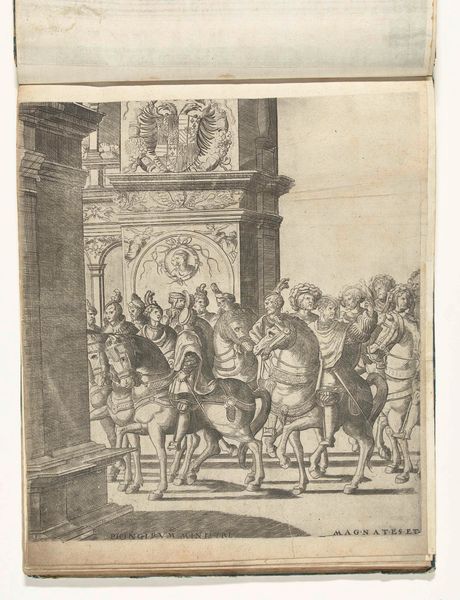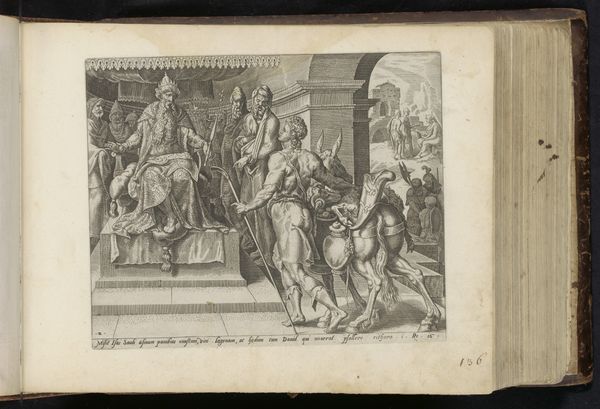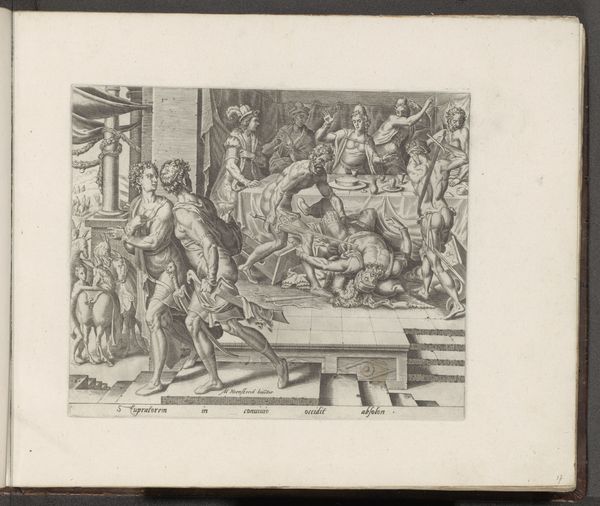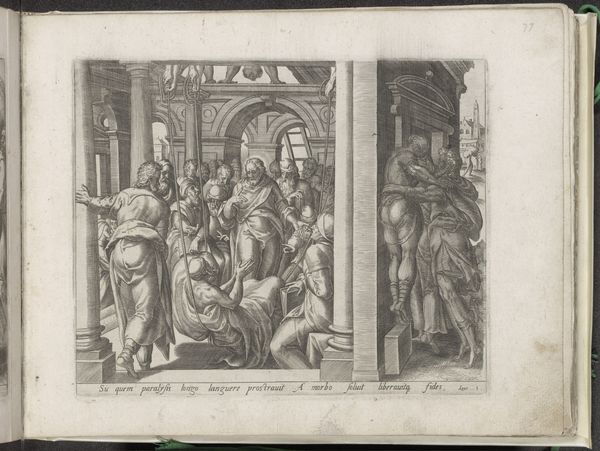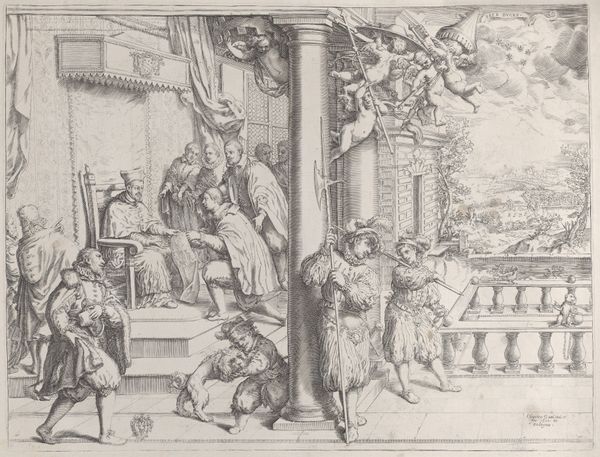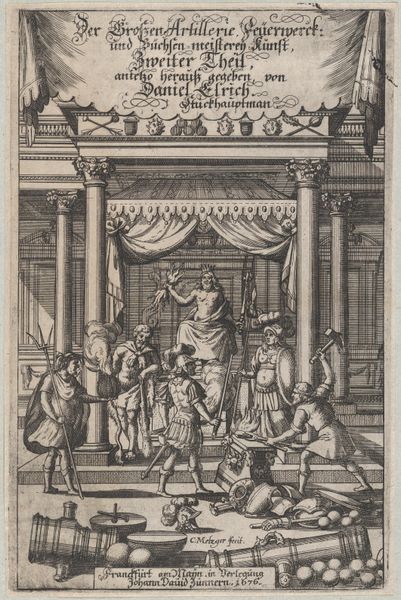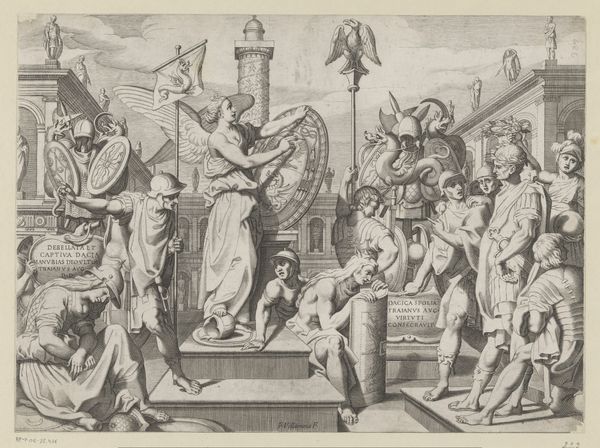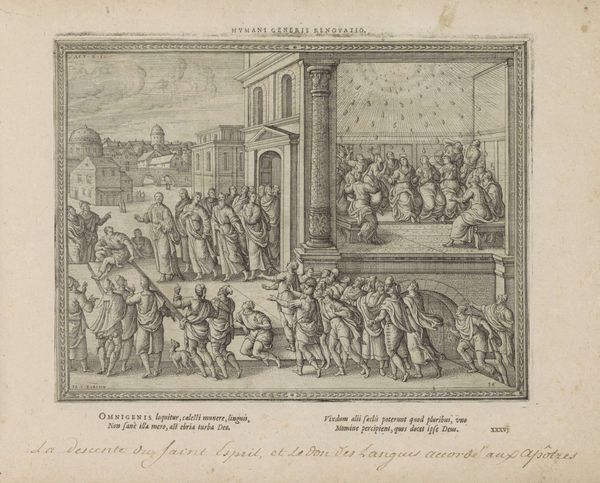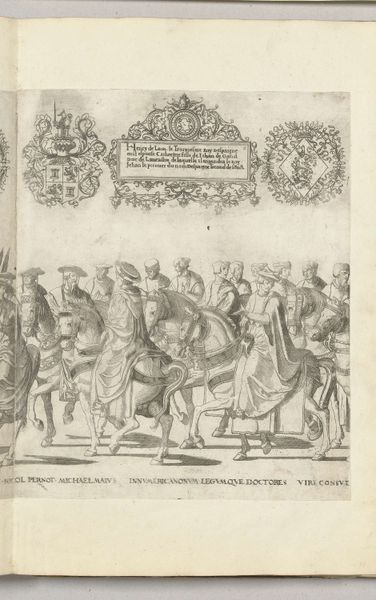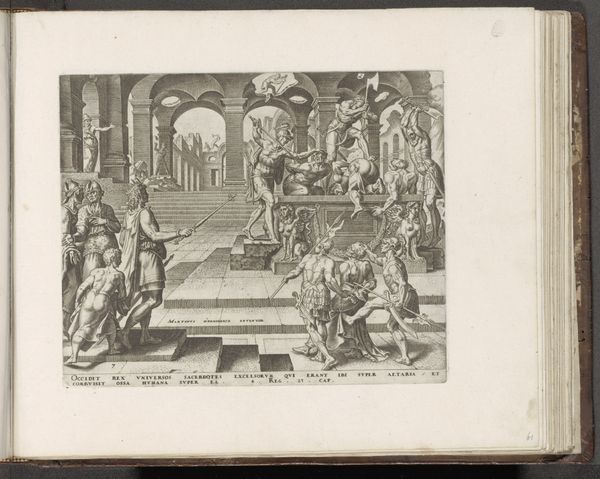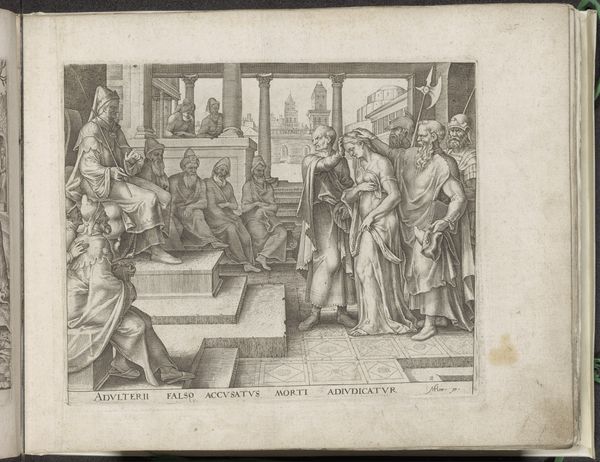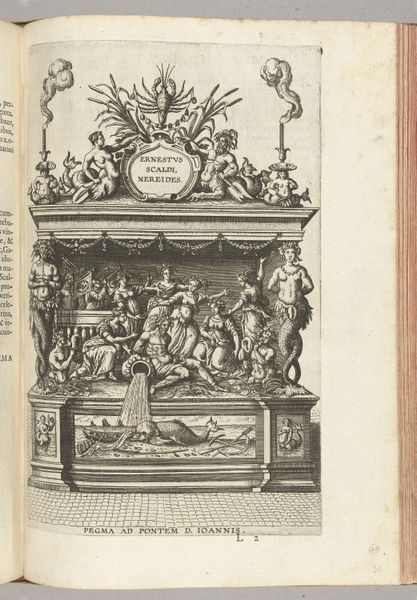
print, engraving
# print
#
landscape
#
figuration
#
line
#
history-painting
#
italian-renaissance
#
engraving
Dimensions: height 360 mm, width 295 mm
Copyright: Rijks Museum: Open Domain
Curator: Let's delve into this print, "De kop van de stoet bij een triomfpoort, plaat B" by Nicolaas Hogenberg, dating back to 1530-1536. The medium is engraving. Editor: Right, I see a procession of figures on horseback passing through what seems like a triumphal arch. It feels very formal, almost staged, and the line work is incredibly detailed. What stands out to you in this piece? Curator: As a materialist, I'm drawn to the socio-economic context that birthed this engraving. How did Hogenberg’s access to tools, the availability of paper, and the patronage system influence the creation and dissemination of this image? Consider the labor involved in producing these intricate lines. Was this piece made for a wealthy patron or mass consumption? Editor: So, thinking about the "means of production" behind the artwork? Interesting! It feels less about the event depicted, and more about how engravings were becoming a medium to display wealth and power through their craft. But where does the Italian Renaissance come in? Curator: The Italian Renaissance's influence extends beyond subject matter to embrace advancements in engraving techniques, such as creating tonal variations and textures, while simultaneously spreading Renaissance ideology. Does knowing this give you a different perspective on how the image functions as an object? Editor: Definitely. I was initially drawn to the historical narrative within the piece, but focusing on the physical production, materials, and how the object itself circulated brings in a whole other level. The act of reproducing it with ink, with a Renaissance influence... Fascinating! Curator: Exactly! Examining the materials and mode of production reveals a deeper understanding of how meaning is constructed. That intersection, labor and capital creating cultural artefacts. Editor: Well, I never thought about engravings this way. It shifts it from just a historical depiction to a document of social and economic factors at play. Thanks!
Comments
No comments
Be the first to comment and join the conversation on the ultimate creative platform.
